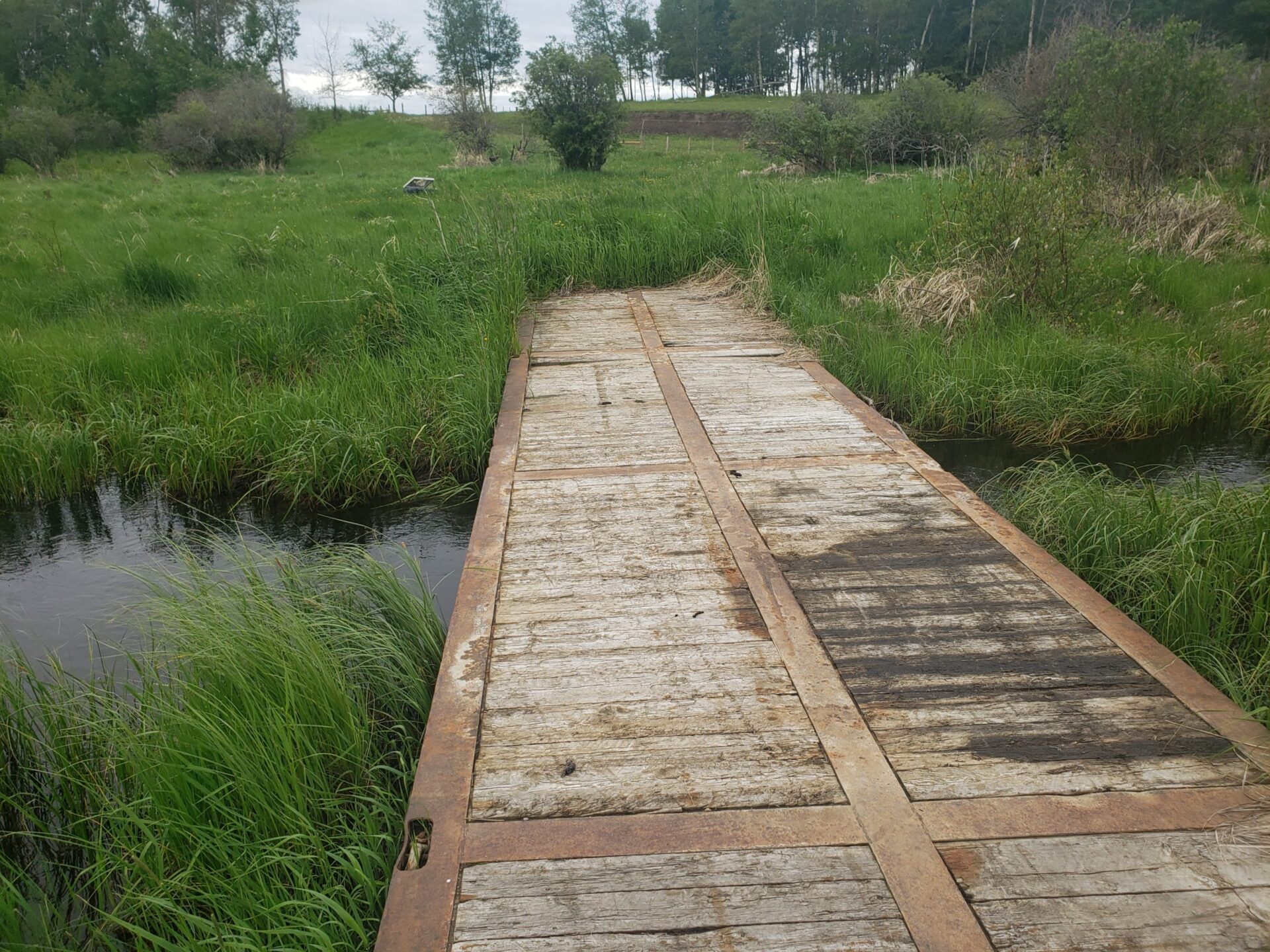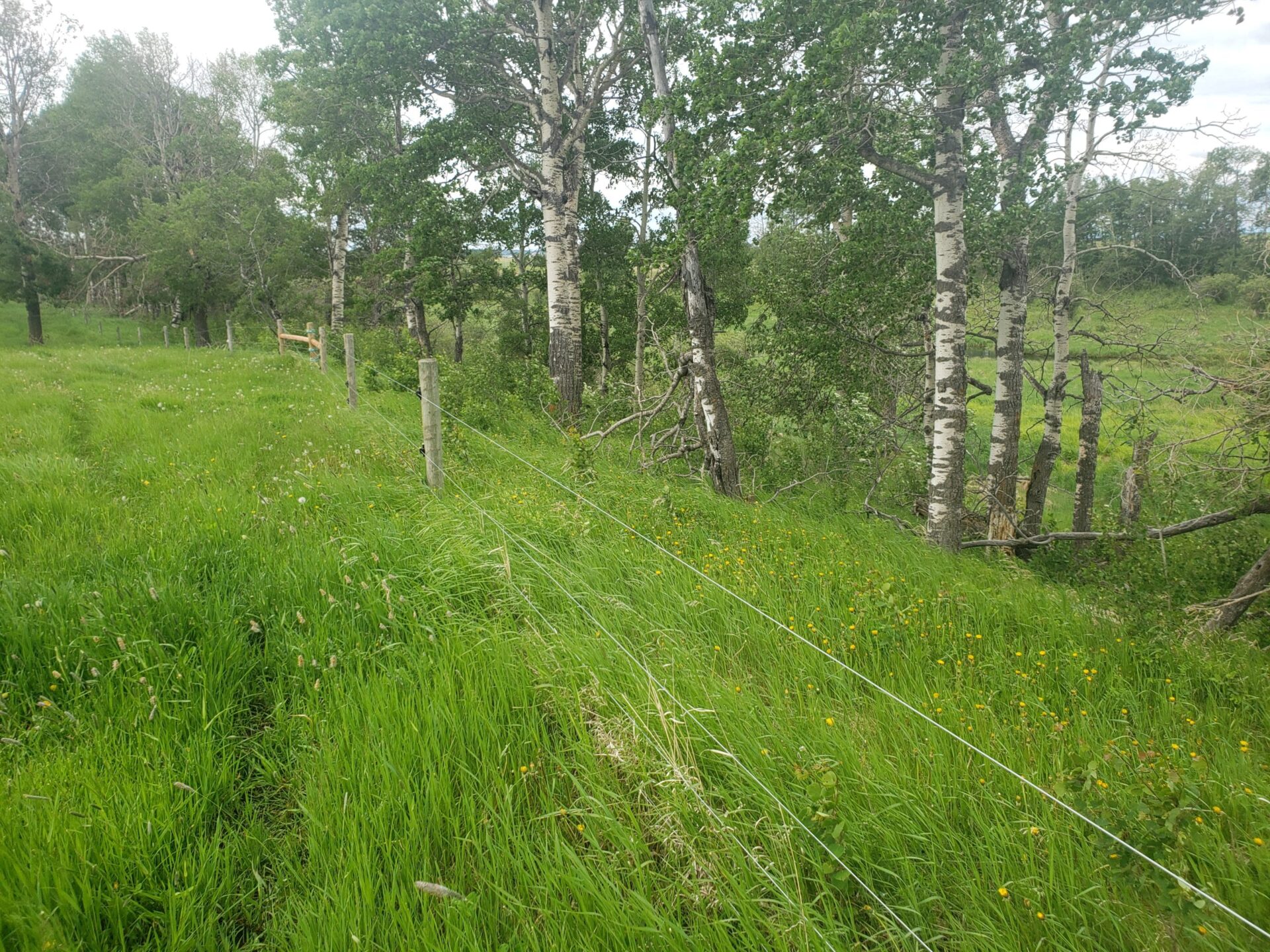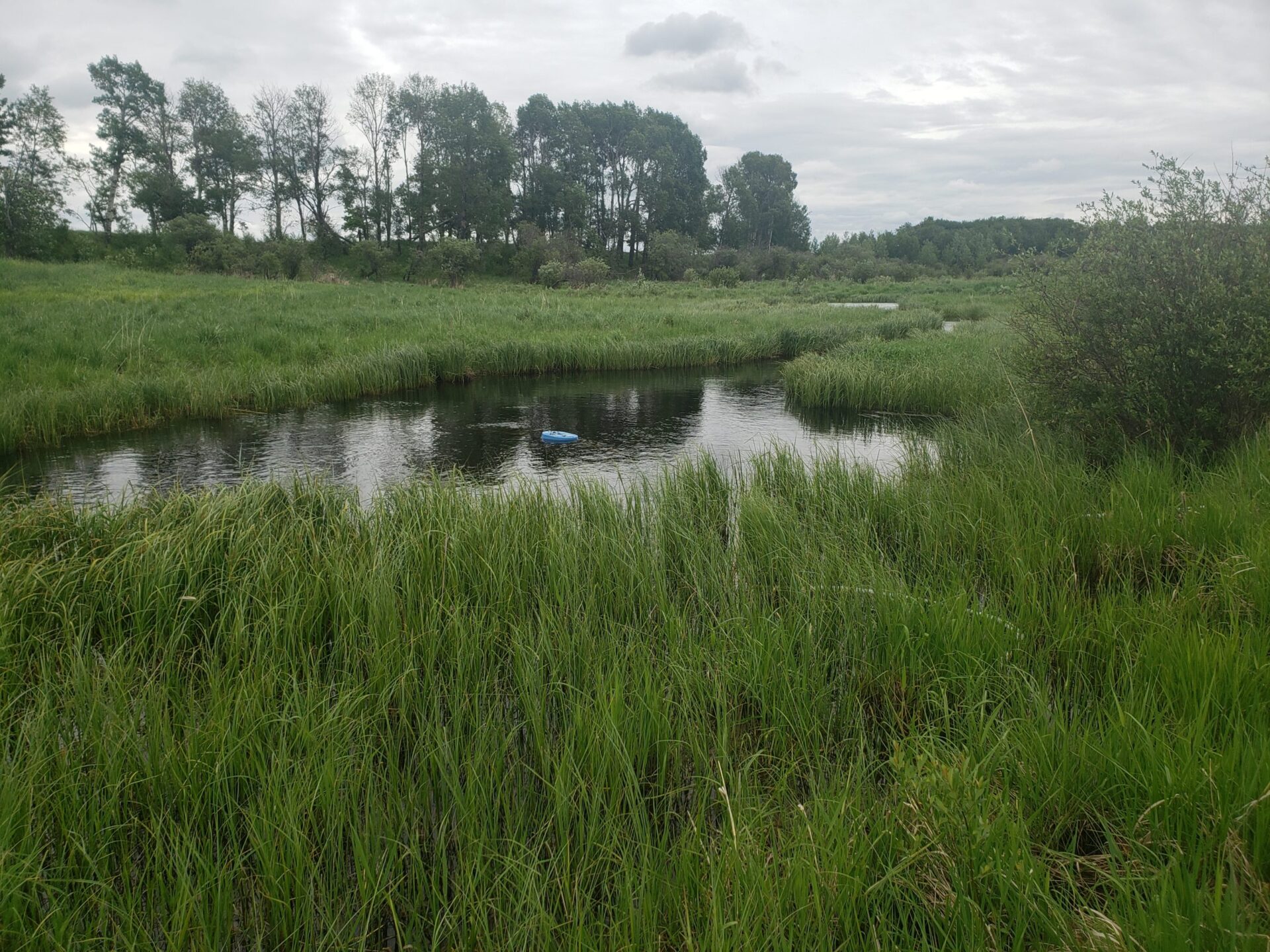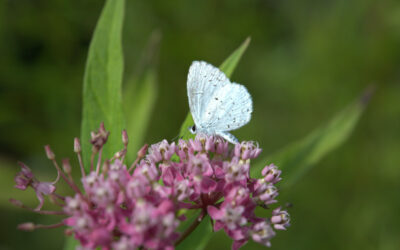Improving nature for harmonious habitat, both wild and domestic

Affectionately called Hirtle Crossing, this is the rig mat that allows the cattle to cross the creek.
Daryll and Pam Hirtle run sheep, goats and cattle on their farm in Red Deer County. They joined ALUS Red Deer County in 2018 after searching for a solution to the impact their herds were having on a creek running through their land.
During a conversation with a local fencing company about how to improve the infrastructure on their operation, they were told that the ALUS program might best fit their needs.
The first thing the Hirtles did with ALUS was fence off both sides of the creek with a good, sturdy four strand electric fence to keep cattle and sheep out in sensitive areas which require full exclusion to protect the creek, and two-strand fencing where they only have to manage cattle or sheep grazing intensity. The fence was designed with enough room to graze livestock when timing and conditions are right.

The fencing excludes the cattle from roaming into the sensitive wetland ecosystem.
Next, they installed a solar-powered alternate watering system to keep the livestock away from the creek by giving them a different source of drinking water. The alternate watering system pumps water from the creek and is controlled by a float switch when the cows come for a drink. An added bonus is portability—it can be easily moved to different locations as needed, where permanent piping would be rigid and affected by seasonal water levels in the creek. This allows the Hirtle’s more flexibility for their herd management and impact management by preventing over-use of any one particular area.
The third problem that the Hirtles solved through ALUS was how they could move the cows from one side of the creek to the other without having them wade through the creek. The solution was to find a narrow spot in the creek channel and set a rig mat down across it. This creates a makeshift bridge for the animals to use. According to Pam, it took a little bit of training, but once the cows figured it out, they are happy to use it all the time.
These ALUS projects have combined to give Daryll and Pam the infrastructure they needed to maintain the health of their creek and the land around it. Within just two years, the Hirtles have observed clear changes to the land along the creek. There are many more young willows and other shrub and tree saplings growing, an abundance of flowering plants, lush grasses and water-loving plants like sedges have sprung up.
Through their tenacity and desire to ensure the health of their land and water, the Hirtles have created a win-win opportunity for both themselves and the environment by not only improving the health of the creek, but the health of their land as well.
ALUS is proud to count Daryll and Pam Hirtle among its Trailblazers in Alberta.

The water pump attached to this float, is located in a deeper, quieter part of the stream so it can pump to the trough on high ground.



